Page contents
Follow the exercises below without causing too much pain. This will prevent your injured area from becoming too stiff and will help the healing process. It will also promote circulation and reduce the risk of developing a blood clot (Deep Vein Thrombosis, or DVT).
Foot exercises
These exercises, depending on your injury, can usually be done straight away after your injury.
Repeat each of the following 10 times:
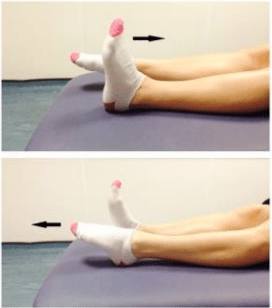
Step 1: Point your foot up and down within a comfortable range of movement.
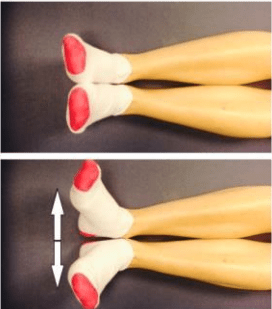
Step 2: With your heels together, move your toes apart to turn your foot outwards. Do this gently as long as it’s comfortable for you
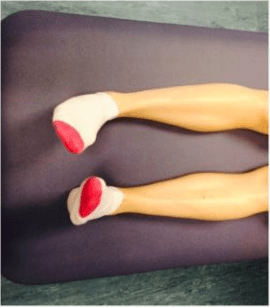
Step 3: Turn the feet in towards each other as in the picture, keep the legs still, moving from the ankle only.
Ankle stretches
These exercises, depending on your injury, can usually be done 4-6 weeks after your injury.
Repeat the following 5 times.
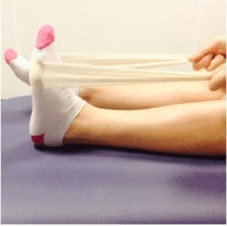
Step 1: Sit with your leg straight out in front of you. Put a towel or bandage around your foot and pull it towards you. Feel a stretch in the back of your calf. Hold for 30 seconds.
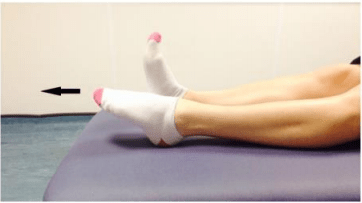
Step 2: Point your toes down as far as they go. Use your other foot on top to apply some pressure to create a stretch on the top of your foot. Hold for 30 seconds.
Balance strategy exercises 1
These exercises, depending on your injury, can usually be done 6 weeks after your injury.
These exercises are typically for patients who could NOT stand on one leg before their injury.
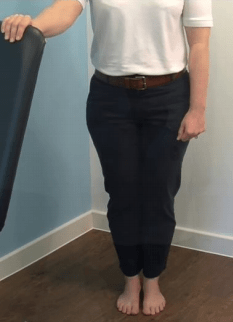
Step 1: Stand with your feet as close together as possible. Hold onto a firm surface (back of a chair or a table) for support. Hold this for 30 seconds.
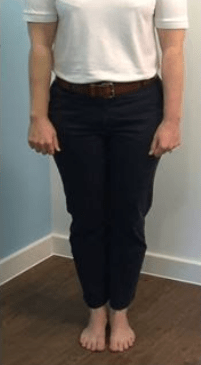
Step 2: Follow step 1 above but remove your hand from the support so that you’re balancing. Hold this for 30 seconds.
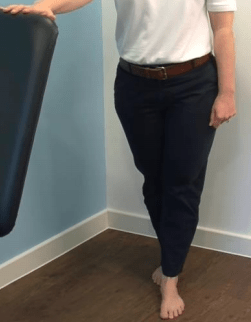
Step 3: Still holding onto the support, put one foot in front of the other as close together as possible. Hold this for 30 seconds. If you feel confident with this exercise, try to keep your balance without holding onto the support.
Balance strategy exercises 2
These exercises, depending on your injury, can usually be done 6 weeks after your injury.
These exercises are typically for patients who could stand on one leg before their injury.
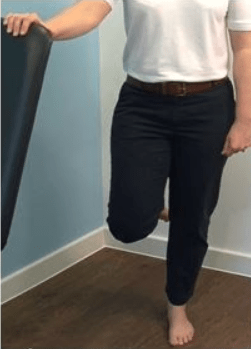
Step 1: Hold onto a firm surface (back of a chair or a table). Try to stand on just your injured leg. Hold this for 30 seconds making sure it does not cause any pain. Once you can do this pain free, move onto step 2.
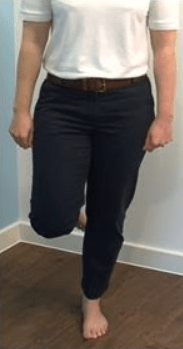
Step 2: Try to stand on just your injured leg without holding on to a support. Try to hold this for 30 seconds.
Step 3: When you’re confident, try these exercises while turning your head from side to side. Always keep your eyes open and stand in a safe environment with a firm surface close by in case you need it.
Advanced balance exercises 1
Try this exercise if you have good balance, and only after 6 weeks has passed since your injury. <<< mention that they should have done all previous exercises on this page before attempting this? >>>
- Stand on your injured leg on an uneven surface such as a doubled-over pillow or wobble cushion. Attempt to balance for 30 seconds. Once you can do this pain free, move to step 2.
- When you feel confident, try it whilst turning your head side to side. Always stand in a safe environment with a firm surface close by in case you need it. Hold this for 30 seconds.
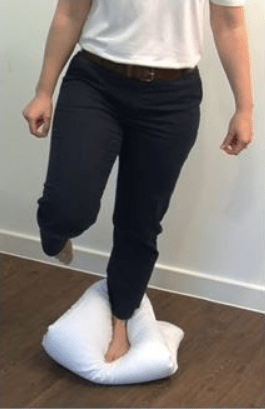
Advanced balance exercises 2
Try this exercise if you have good balance, and only after 6 weeks has passed since your injury. <<< mention that they should have done all previous exercises on this page before attempting this? >>>
- Stand with one foot in front of the other with your hands together. Swing your arms in a figure of eight in both directions for 1 to 2 minutes. Swap leading foot and repeat.
- Follow step 1 as above but bring your feet together so they’re touching toe to heel.
- Follow steps 1 and 2 whilst turning your head side to side.
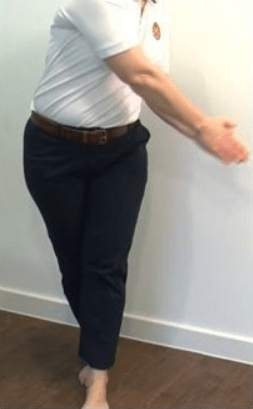
Hand exercises 1
Bend and straighten your fingers and thumb 10 to 15 times. Your cast may restrict the movement at first.
Do this regularly throughout the day.
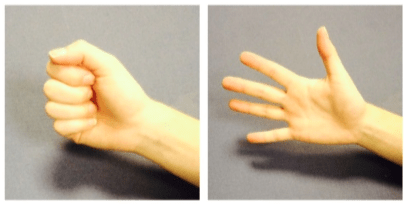
Hand exercises 2
Repeat each of the following 10 times.
- Open and close your hand. Next, move your wrist up and down.
- After a few days, hold a soft ball/ball of socks. Squeeze the ball as hard as possible without pain. Hold for 5 seconds.
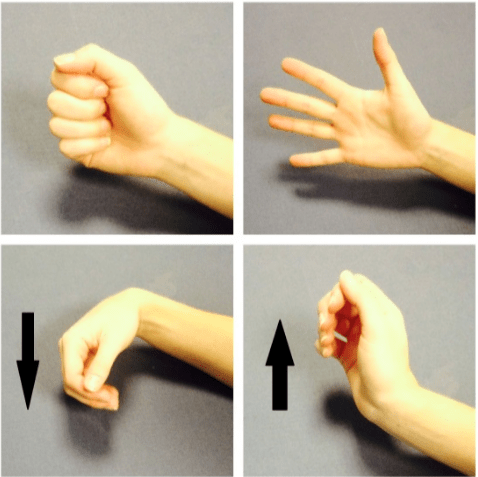
Neck exercises
It’s also important to stretch your neck muscles. Remove your sling and:
- look up
- look down
- look left
- look right
- look side to side.
Repeat this a few times every day.
Elbow exercises 1
- Sit or stand with your elbow supported
- Keep your elbow by your side during the exercise
- Turn your palm up and then palm down.
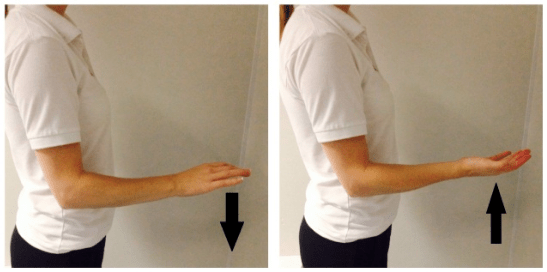
Elbow exercises 2
Complete the following 10 times each.
- Bend and straighten your elbow so that you feel a mild to moderate stretch.
- Bend your elbow to 90 degrees.
- Slowly turn your palm up and down until you feel a mild to moderate stretch. Do not push into pain.
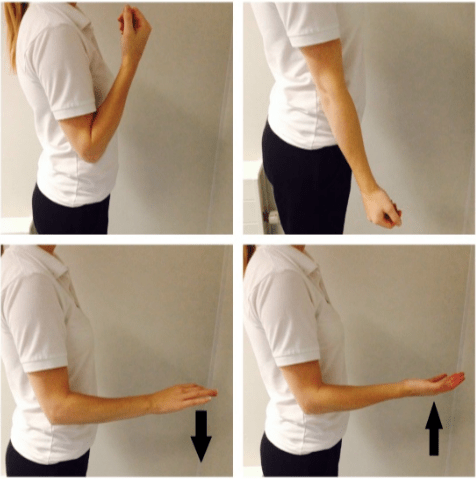
Elbow exercises 3
- Lie on your back
- Raise your injured arm so that your elbow points to the ceiling
- Support your elbow with your other hand
- Slowly straighten your arm to lift the hand in the air
- Gradually lower your hand back down to the pillow.
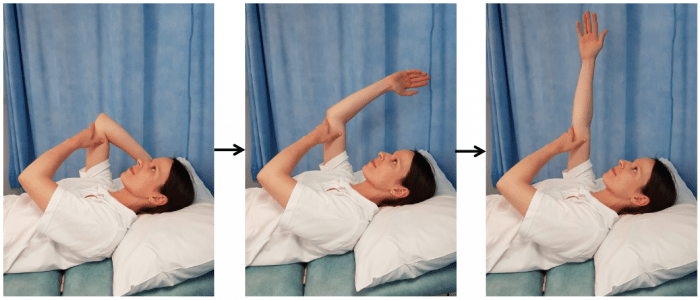
If you have a problem with your shoulder
You may not be able to move into this position. You can modify the exercise above to make it easier as follows.
- Lie on your back
- Rest your arm by your side
- Practice bending and straightening your elbow
- Keep your elbow and upper arm resting on the bed while you do this movement.
Knee exercises 1
Point your foot up and down. Repeat this 10 times.

Knee exercises 2 – static quadriceps
Keep the leg straight and supported. Gently tense your thigh muscle and try to straighten your knee further.
Hold for 10 seconds and repeat 7 to 10 times.
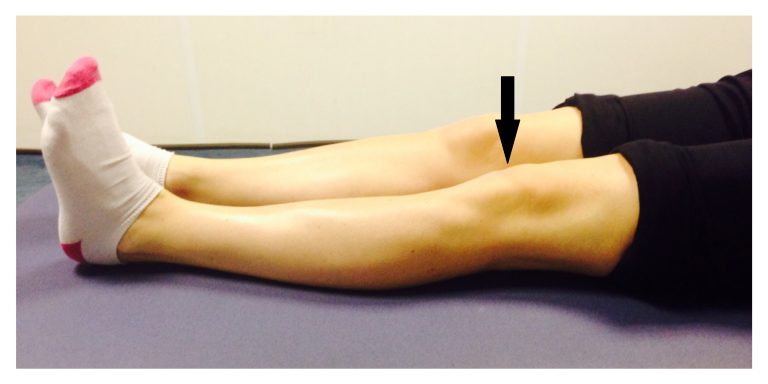
Knee exercises 3 – inner range quadriceps
- Place a rolled up towel or small pillow under your injured knee.
- Tense your thigh muscle and try to straighten your knee. Keep the back of your knee in contact with the towel or pillow.
Repeat 10 times. Try to hold your knee straight for 5 seconds.
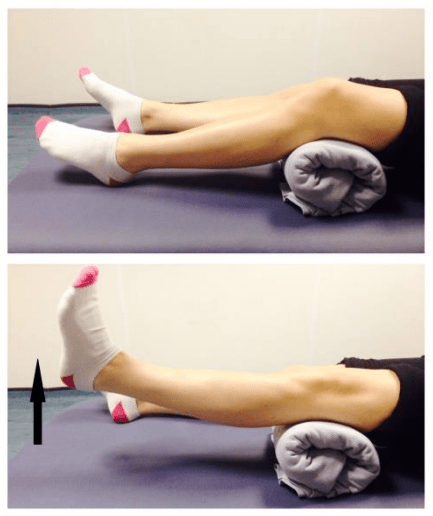
Knee exercises 4 – flexion and extension
- Sit or lie with your legs outstretched.
- Bend and straighten your injured leg. Go as far as you feel comfortable.
Repeat 7 to 10 times.
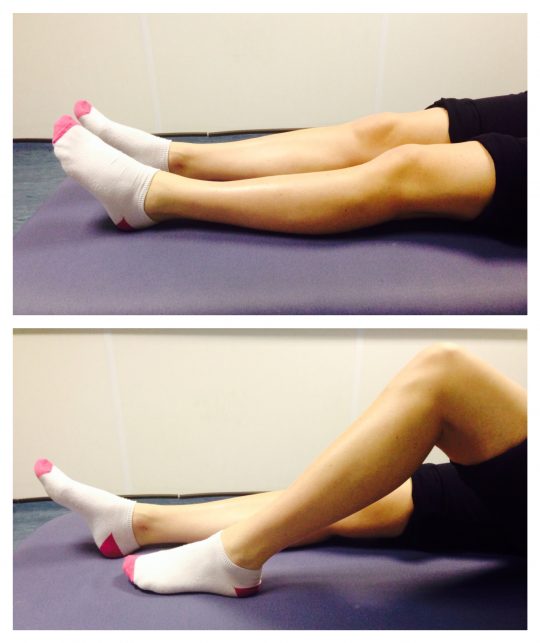
Knee exercises 5 – seated flexion and extension
Bend and straighten your knee while sitting as comfort allows. Repeat 10 times.
If you can, hold your leg straight for up to 5 seconds.
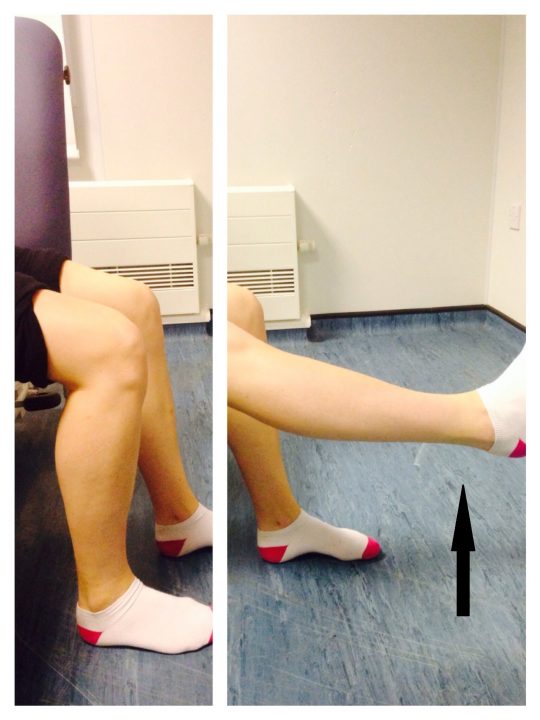
Knee exercises 6 – straight leg raise
- Bend your uninjured knee and straighten your injured knee.
- Slowly lift your straightened leg. Then slowly lower your straightened leg with control.
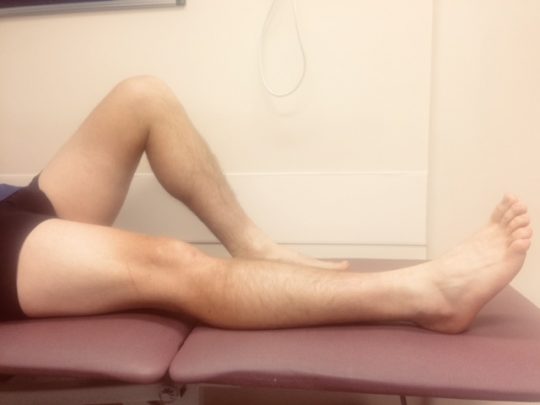
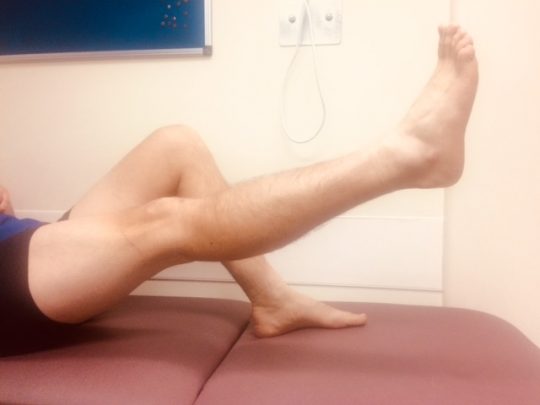
Knee exercises 7 – mini squats
- Stand up with your arms across your chest.
- Slowly lower your bottom into a squat position as if you are sitting on an imaginary chair.
- Stand up again.
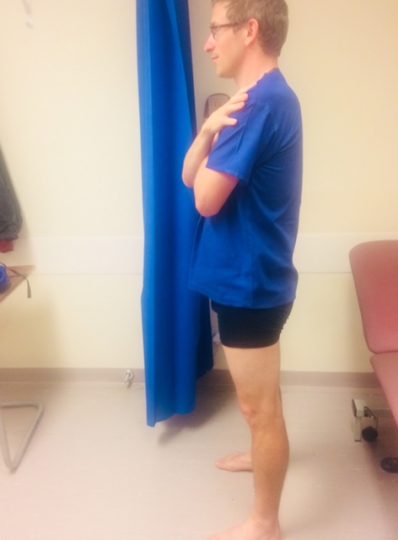
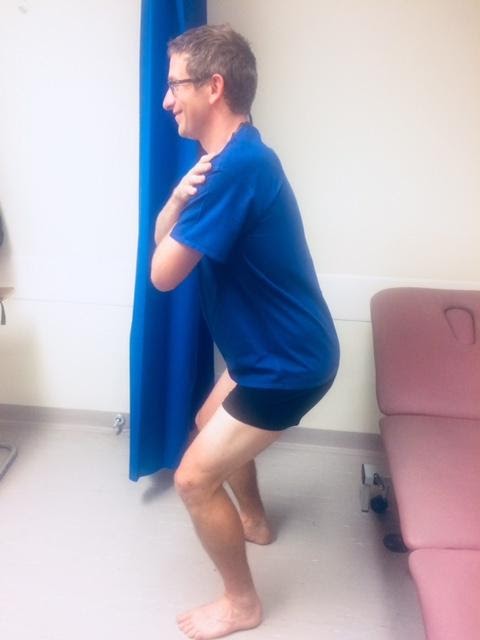
Page last reviewed: 9 March 2023

